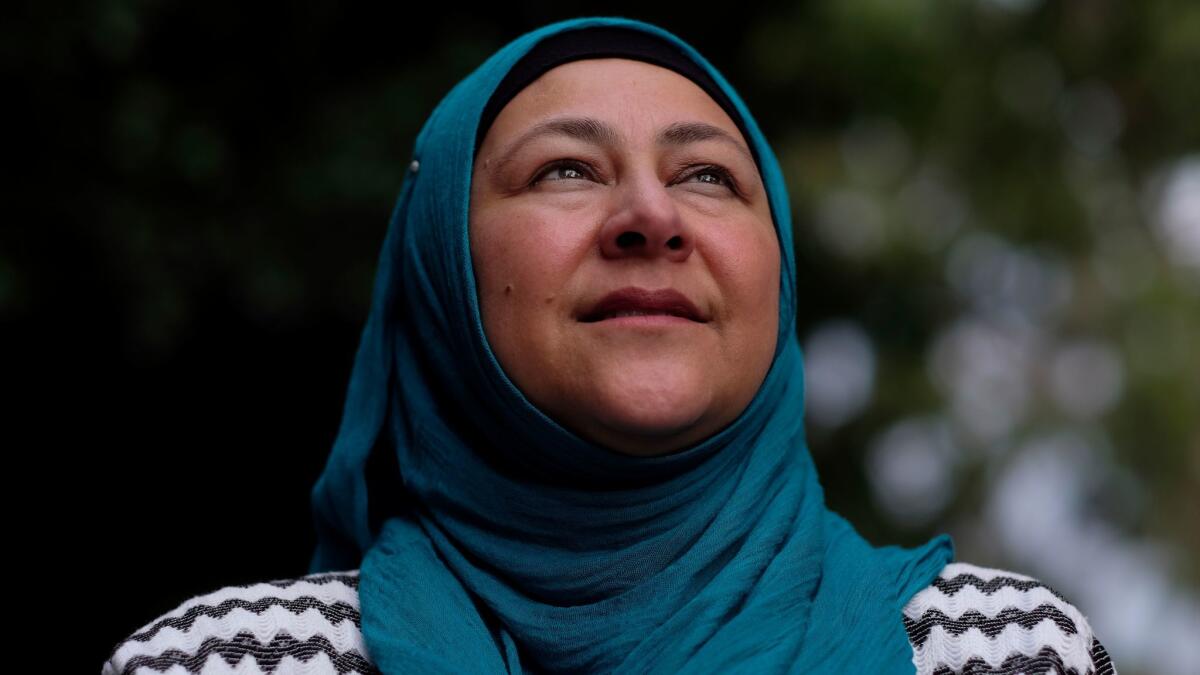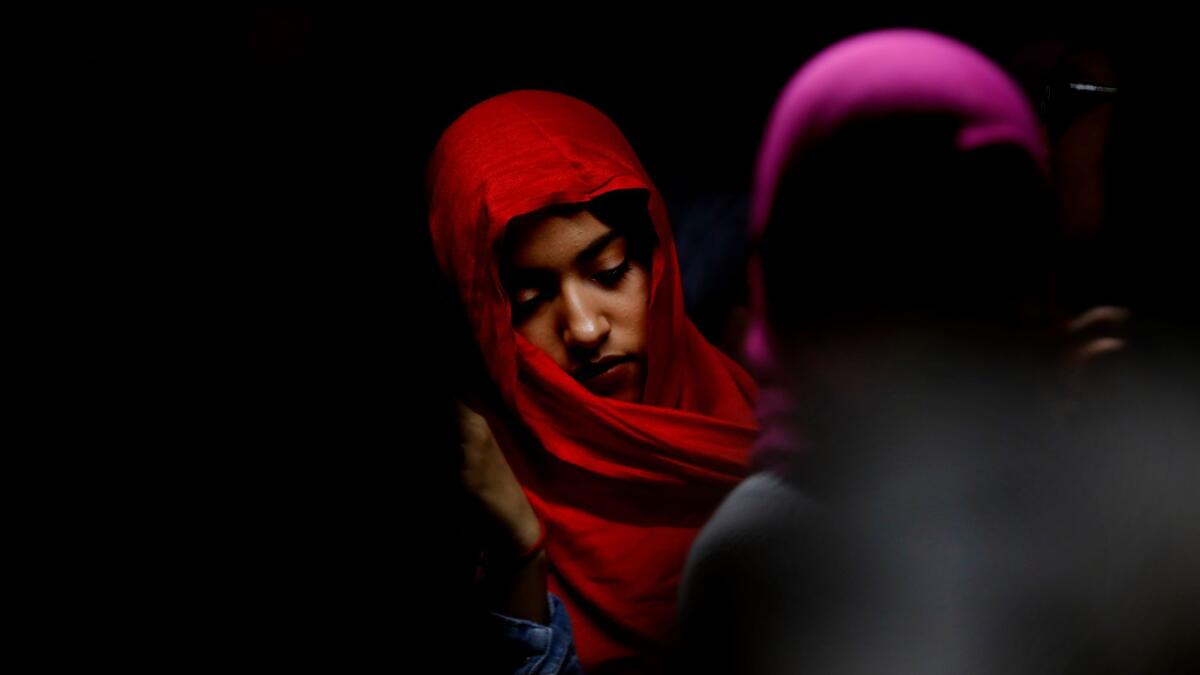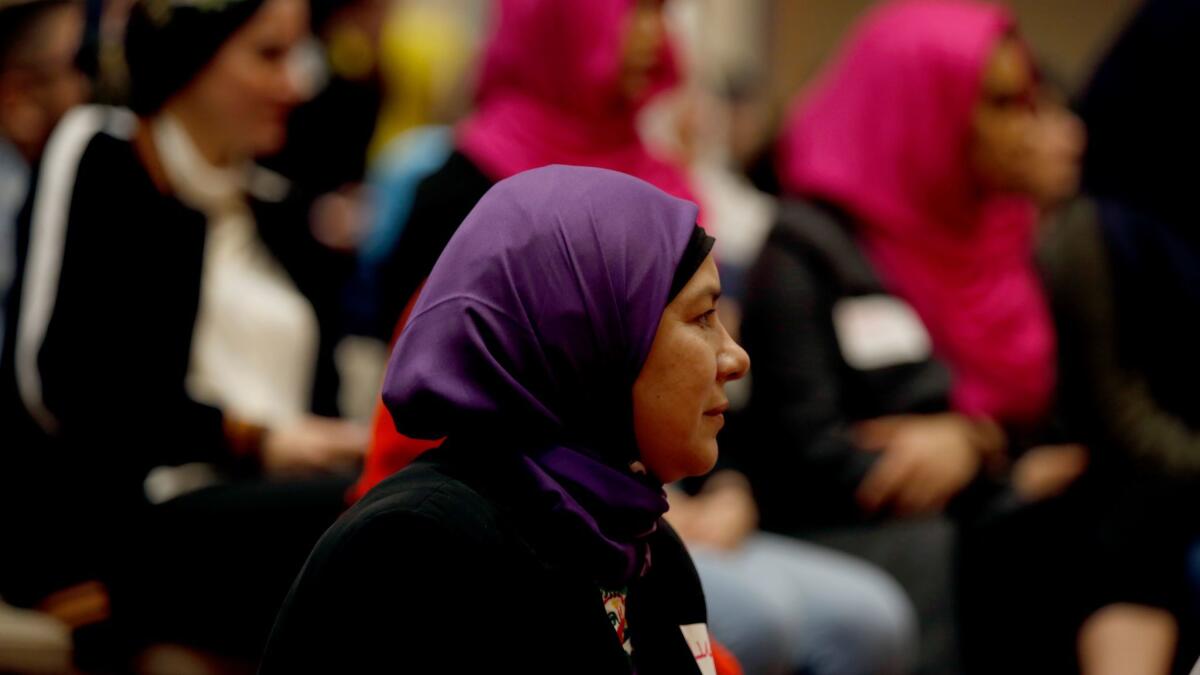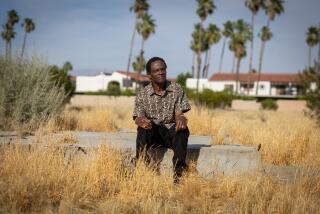Like an invisibility cloak, Latina Muslims find the hijab hides their ethnicity — from Latinos

Magdalena Al Omari, a Mexican American convert to Islam, slipped on the hijab and braced for whatever may come.
It happened a few months later, in the checkout line of a grocery store in Santa Ana.
“¿No tiene calor en esa cosa?” one woman asked another. Isn’t she hot in that thing?
Al Omari shot back, in perfect Spanish, that yes, it was quite a hot day in general. Aren’t you hot, she asked.
The Garden Grove resident had prepared herself for the suspicious looks and glares that would accompany her hijab — a powerful, conspicuous symbol of the Muslim faith. But Al Omari was surprised by another, unexpected consequence of wearing the headscarf: It had essentially erased her Mexican American identity for other Latinos.
“As time went on, people were not seeing me as being Latina,” the Tijuana-born Al Omari said. “They were seeing me as Arab.”
As a Latina Muslim, she’s among the fastest-growing ethnic group in Islam and at the intersection of three demographics spurned during President Trump’s nascent administration: women, Muslims and Mexicans.

“It’s a heavy dance. You are never really in one place. It’s like you never feel at home in either place,” said Eren Cervantes-Altamirano, a Toronto-based blogger and writer who has researched and studied the intersection of being Latin American, indigenous and Muslim in the U.S. and Canada. “You have to play it day by day.”
Though the exact number of Latino Muslims in the U.S. is difficult to gauge, some experts estimate there are 200,000 and about 90% of them are converts, according to a report authored by Stephanie Londono, a Florida International University professor and researcher who has studied the trend of Latinas converting to Islam.
Most Islamic converts are women, Londono said.
“It’s a fluid identity for these women, especially Latina immigrants. They are creating their own category and creating their own story by mixing these two elements: Islam, a religion that is very visible, and being Latina — especially when they wear the hijab,” Londono said.
While being a Latina Muslim may be a growing trend, it certainly shouldn’t come as a surprise, said Cervantes-Altamirano, who converted to Islam 10 years ago and writes extensively on the challenges experienced by women who become Muslim.
“That is the nature of living in a society that is more diverse,” she said.
In Orange County, the Latino-majority city of Santa Ana is neighbors with Anaheim, home to Little Arabia.
Spurred by a sense that both were in the political crosshairs of the Trump administration, the communities created the Muslim-Latino Collaborative in Anaheim.
Some Latinas have converted to Islam as a result of a relationship with a Muslim partner, such as courtship or marriage, according to Londono’s study.
But while a Latino who converts to Islam can go about his life inconspicuously, women who choose to wear the hijab find that hard to do.

Lucy Silva, a Garden Grove resident, was born in Mexico and grew up Catholic, but she converted to Islam after meeting her husband, who is Muslim.
Silva converted to Islam three years before making the choice to permanently wear a headscarf. That was two weeks before the 9/11 attacks.
“It represented a lot of challenges. But it was not out of coercion. It’s based on my Islamic faith. I decided on my own to do it,” she said.
Wearing a Mexican-inspired flower-embroidered white shirt and her headscarf, Silva spoke about her decision before 400 people in a cramped room at the Islamic Society of Orange County mosque in Garden Grove during a World Hijab Day event.
Like Al Omari, Silva said most people don’t perceive her as Latina because she covers her head.
“We always have to defend our Latino heritage when it comes to communicating with other Latinos so we don’t lose that identity just because we are Muslim. With Mexicans, we have to prove we are still Latino,” she said. “With Muslims, we have to prove ourselves as Muslim through our faith. As Americans, we have to prove to Americans we are also American.”
In the beginning — even before wearing the hijab — Silva said she had to reassure her parents, who believed she was going to give up her identity after converting.
“Look, Mom, I’m still Mexican, OK?” she said she had to tell her mother once.
Still, some find that converting to Islam can strain relations with family members who are not Muslim.
Jose Moreno, Al Omari’s brother, said he and his sister are trying to remedy their relationship — meeting up at least once a year — after growing distant for some time.
While Moreno doesn’t blame his sister’s conversion entirely for their drifting apart, he said it did play a role.
“Her religion doesn’t bother me,” he said. “My parents, on the other hand … they still, to this day, they still don’t like it.”
That friction was one of the reasons the family drifted, Moreno said.
“Her life revolved mostly around her Muslim community, as I see it,” he said. “It didn’t really involve us a lot. It was very minimal.”
Silva and Al Omari belong to a group of Muslim Latinas in Orange County who guide others — many Latina — going through the conversion process.
What do you say if you cover your head and your Catholic father doesn’t like it?
“You have to explain that nuns also cover and Mary covered,” Silva responds.
Like many Muslim women, a large number of Latina converts do not wear the hijab.
Dina Bdaiwi, whose Mexican mother converted to Islam, first wore the hijab during her senior year in high school and into her first year in college. But the 22-year-old from Irvine — who describes herself as shy — felt like it attracted too much attention.
She also felt like the headscarf distanced her from the Latino, non-Muslim side of her family. It’s not that they ever said anything, she said. It was just a feeling.
“I felt like they knew me a certain way, and that was without the hijab. I wanted to feel close with my family again,” said Bdaiwi, a senior at UC Irvine. “I just wanted things to be the same as they were.”
After a year, she took it off.
Marya Ayloush, a 21-year-old whose father is Arab and whose Mexican mother also converted to Islam, sees the hijab as part of her identity.
Seven years ago, she launched Austere Attire, a Los Angeles-based online clothing store that sells headscarves — many of them modern and hip, targeting millennials.
Though Ayloush was always drawn to her Arabic identity, she recently reconnected with her Mexican heritage, she said. A UCLA student, she’s majoring in Chicano studies.
In late January, Ayloush joined thousands of protesters who converged at Los Angeles International Airport to condemn Trump’s travel restrictions on certain predominantly Muslim countries.
She carried a sign she made. It read: “I am a Mexican, Arab, Muslim, Woman. Trump’s Boogey Man.”
Follow Cindy Carcamo on Twitter @thecindycarcamo
More to Read
Sign up for Essential California
The most important California stories and recommendations in your inbox every morning.
You may occasionally receive promotional content from the Los Angeles Times.











